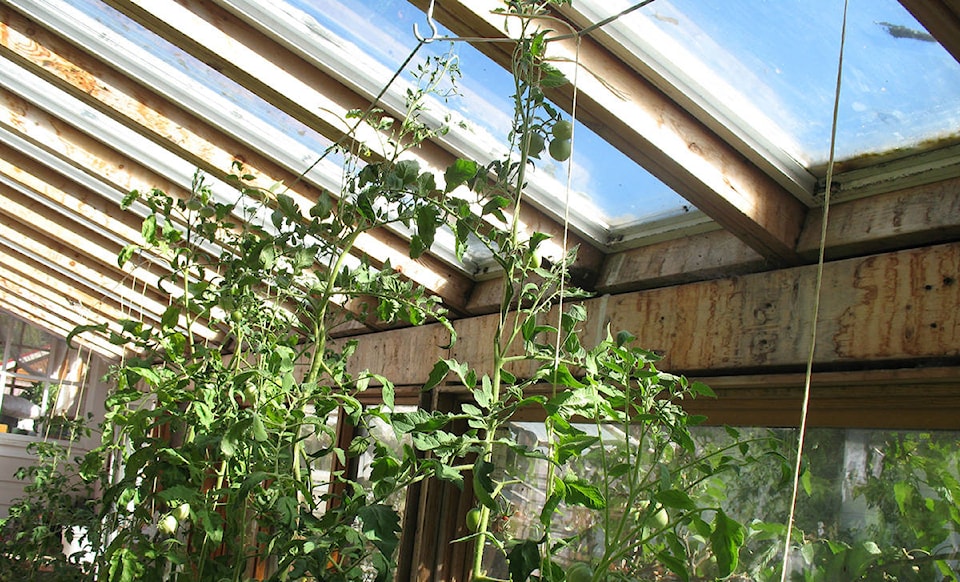By Mary Lowther
If you haven’t covered the tomatoes yet, you’ll want to do it now before the rains fall in earnest.
When tomato leaves get wet this time of year, late blight spores stick to them and run amok through the whole crop overnight. This fungus hit the northwest coast in the late ’90s, destroying any tomato or potato plants that weren’t under cover and it’s entrenched. I grow early potatoes now because the spores remain dormant in the soil, just itching to infect every unwary wet tomato and potato leaf it comes across.
Sure, we can spray fungicides purporting to kill this fungus if we want to poison ourselves and the bugs that live on these plants, but it’s easy enough to prevent blight in the first place. Dig up potatoes before mid-September and make sure the tomatoes get covered by then. Space the plants far apart in the spring and trim off most of the sprouts so air circulates and keeps the leaves dry. Use soaker hoses that only water the roots and when using compost tea, pour this only on the root zone.
We can extend the season now by cutting down the string holding the plants up and laying them sideways on a bed of straw or dry mulch. Install hoops along the bed and cover this with clear plastic. This low tunnel will keep them warm and dry and can be removed on the sunny days ahead.
Even though my tomatoes have had nothing done to them except fertilizing last June and watering twice a week, the suckers from last year have been producing bunches of small tomatoes for the house-sitters. Clipping new flower trusses and nipping all growing ends at the end of August prevents energy from being sapped from developing tomatoes. While you’re at it, why not cut off a few suckers to pot up and bring into the house over the winter to re-plant next spring?
Here’s my favourite recipe for tomato sauce from Laurel’s Kitchen cookbook:
¼ onion, chopped
1 clove garlic
2 Tbsp oil
1 small carrot, grated
2 Tbsp chopped green pepper
1 bay leaf
½ tsp oregano
½ tsp thyme
1 tsp basil
2 Tbsp fresh chopped parsley
2 cups tomatoes, coarsely chopped
1 six-ounce can tomato paste
1 tsp salt
1/8 tsp pepper
¼ tsp honey
Directions: Saute onion and garlic clove in oil until onion is soft. Crush garlic with a fork. Add carrot, green pepper, bay leaf, and herbs. Stir well, then add the tomatoes, tomato paste and seasonings. Simmer 15 minutes. Remove the bay leaf. Makes three cups.
I make huge batches of this and can it in a water bath according to the directions for canned tomatoes. In a pinch I’ve made delicious tomato soup by adding one can of water to one can of sauce.
